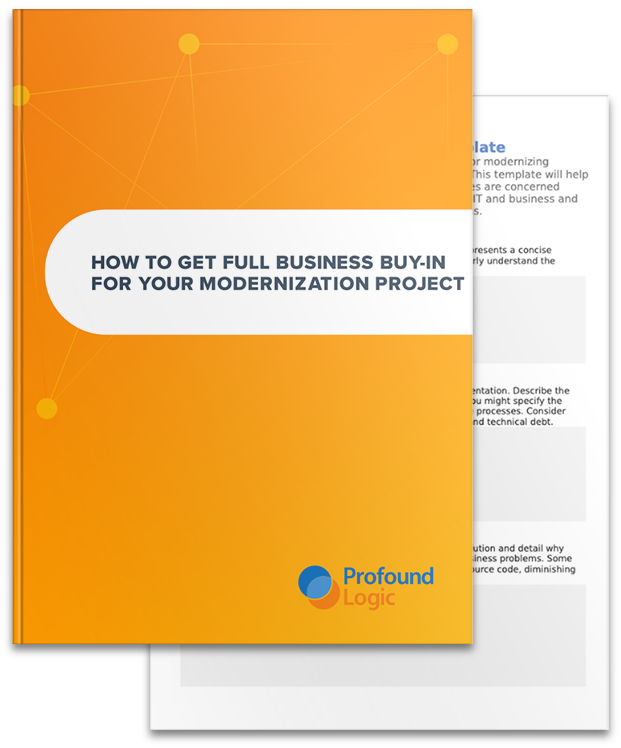 Earlier this year, we announced the arrival of All-in-One Display Files. This new feature in our Profound UI Suite simplifies the management of applications that can be presented in both green-screen interfaces and Rich user interfaces. We added this functionality because many of our customers have end users who work on both 5250 green screen and Web versions of their applications. In some cases, we have offered tools for another ISV to modernize their software, but a portion of their customers still uses the 5250 green screen version. In this case, maintaining both versions can be a real pain and change management becomes complicated. Our All-in-One Display Files feature changes that!
Earlier this year, we announced the arrival of All-in-One Display Files. This new feature in our Profound UI Suite simplifies the management of applications that can be presented in both green-screen interfaces and Rich user interfaces. We added this functionality because many of our customers have end users who work on both 5250 green screen and Web versions of their applications. In some cases, we have offered tools for another ISV to modernize their software, but a portion of their customers still uses the 5250 green screen version. In this case, maintaining both versions can be a real pain and change management becomes complicated. Our All-in-One Display Files feature changes that!
You can learn more about how All-in-One Display Files work here and in our recent webinar with IBM Champion Scott Klement (requires a quick registration to our website). In this two part blog series I will go into more detail about how the feature works, but today I will discuss when you should use the feature by providing some pros and cons.
When deciding whether to convert your green-screens into standard Rich Display Files or All-in-one Rich Display Files, several pros and cons should be considered. Even when you have a clear need to keep your existing green-screens for some time, using All-in-one Display Files may not always be the right choice for you. The other alternative is to simply keep a separate green-screen display file and a separate Rich Display File for each program.
The pros of All-in-one Display Files are:
- You won’t need a separate library or libraries for your Rich user interface. Both interfaces are kept in the same set of libraries.
- You will only have one set of display files to manage – it’s just 1 source member and 1 object for every display, whereas the alternative would require 2 source members (green-screen and Rich) and 2 display file objects.
- You will only have 1 copy of the program object to manage instead of managing 2 program objects. However, keep in mind, that with the alternative method, it is still possible to keep only 1 copy of the program source by using conditional compile directives to surround the HANDLER keyword.
- If you must keep and maintain your green-screen interfaces for an extended period of time, this option greatly simplifies source control and change management.
The cons of All-in-one Display Files are:
- It may take additional effort to maintain the integrity between the Rich portion and the green-screen portion of the display file. This is because the record buffer, or fields, in the two interfaces are now shared and must match. If you are planning to make major changes or a major redesign in both the look-and-feel and the flow of the application, this may require additional work with All-in-one Display Files compared to standalone Rich Display Files.
- Deviating from the functionality of the green-screen (like combining several screens into one in your Rich interface) may take additional consideration and effort.
- Tasks like expanding fields may require changes to RPG code. For example, on the green-screen, you may have a Customer Name output field that is limited to only 12 characters due to real estate limitations of the screen. On the Rich interface, you may decide to expand the field to 30 characters to show the full name. If the Rich Display was in a separate source member, it would generally be a simple matter of changing the field from 12 to 30 characters. However, in an All-in-one Display File, a change like this will cause a mismatch to the green-screen. Therefore, to implement the change, an additional field would have to be added and an additional line of RPG code will be necessary to populate this new field with the full Customer Name.
At the end of the day, if your business still maintains a large number of green screens alongside modern interfaces, All-in-One Display Files will probably be the right choice for you! But if you're ever in doubt, just contact us and we can help you better understand your options. Next time: A deeper dive into how to use All-in-One Display files!




